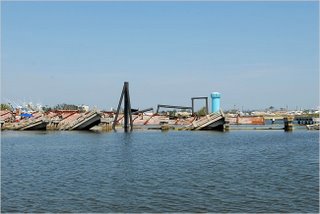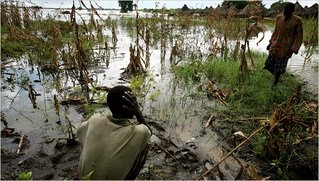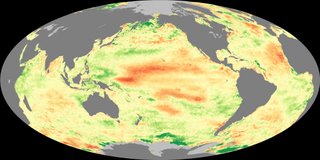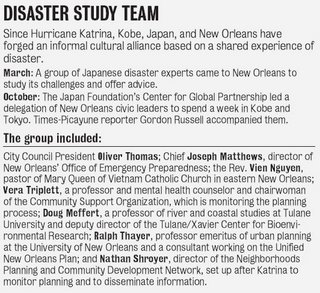
The Church of All Souls began with a fresh coat of paint in a garage that survived Hurricane Katrina. Parishioners added the red, white and blue awning of an abandoned KFC, attaching it with metal salvaged from deserted homes nearby.
Such is the state of rebuilding here.

"Listen," says James Lemann, whose mother's garage became the sanctuary. Down the block, swinging metal groans in a slow breeze; otherwise, the street is silent. "It's a beautiful sunny afternoon," says Lemann, 48. "Do you hear saws? Do you hear any hammers?"

For month after month, it has sounded this way — here, in New Orleans' devastated Lower 9th Ward, and in other places hit hardest by Katrina. The U.S. government has spent more than $80 billion to help the region recover and rebuild. Yet in the nearly 16 months since the storm hit, these areas in coastal Louisiana and Mississippi remain silent shells, and the promise of rebuilding seems distant to those who once lived here.

Homeowners who want to return aren't getting much help. One $7.5 billion Louisiana program to help people rebuild or relocate has put money in the hands of just 87 of the 89,403 homeowners who applied. Along the Gulf Coast, almost 100,000 people still live in trailers and mobile homes issued by the Federal Emergency Management Agency.

In the Lower 9th Ward, a mostly poor section of the city, flood waters severely damaged more than 1,300 buildings, more than in almost any other part of New Orleans, according to city records. Yet by early December, the city had issued only four permits for new homes to be built there, a USA TODAY analysis of permit records shows.

"The bottom line is that the taxpayers of this country are going to spend literally tens of billions of dollars and be surprised and disappointed at how little they are going to be able to show for it," says Sen. Mary Landrieu, D-La.
Why, despite massive aid programs, have so few residents been able to rebuild what Katrina washed away? USA TODAY found:
•Key disaster programs were unprepared for the breadth of Katrina's destruction. For example, the Small Business Administration couldn't keep up with demand for disaster loans, in part because it was understaffed, administrator Steven Preston concedes. FEMA grants to repay cities for rebuilding sewers and schools were backlogged by a cumbersome approval process, says Jim Stark, head of the agency's Louisiana recovery office.
•Homeowner grant programs in Louisiana and Mississippi have proved frustratingly complex. To qualify, property owners had to pledge to buy flood insurance — and pledge that anyone who bought the property also would do so. That required officials to sort through tens of thousands of real estate titles and liens.
•Many homeowners are waiting to see whether others return to their neighborhoods and how well sewers, streets and protective levees are repaired, says Andy Kopplin, executive director of the Louisiana Recovery Authority. Moreover, homeowners who want to rebuild can't always find contractors to do the job because builders are so inundated with projects that some have months-long waiting lists, Kopplin says.

"We call it the new normal. Everybody is just overwhelmed," says Phil Bryant, the Mississippi state auditor, who is tracking rebuilding in the state. "People have come to realize that there's only so much anybody can do in a certain amount of time, and we're moving as quickly as we possibly can."
from USA Today




































